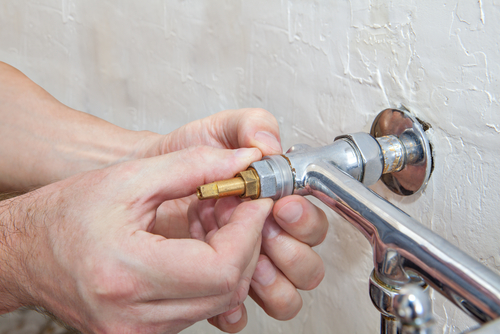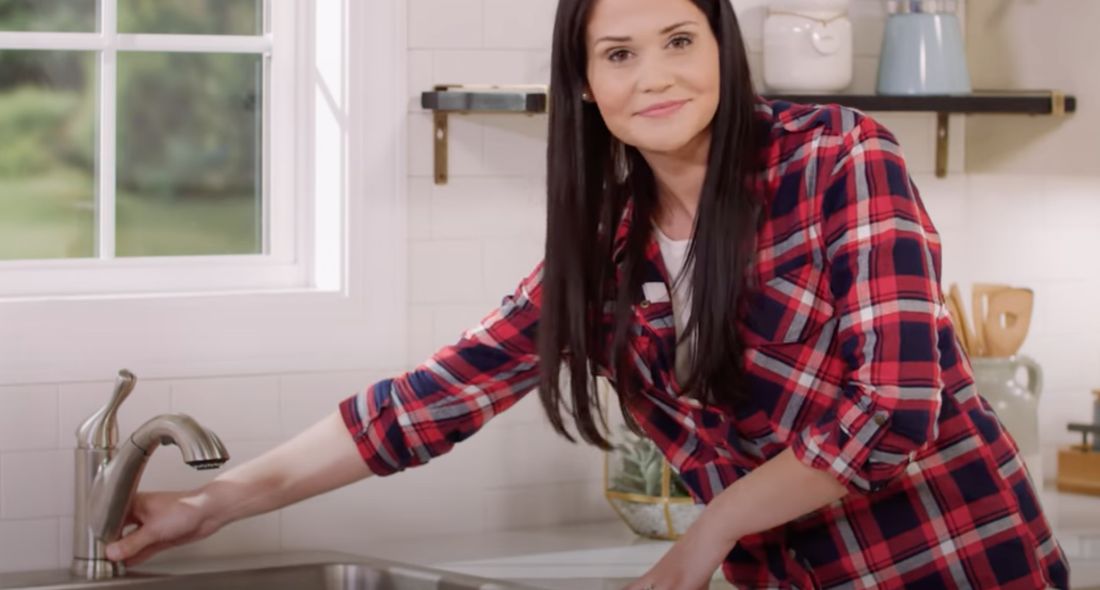We have come across this post relating to Why It's Important to Fix Leaky Faucets listed below on the web and figured it made perfect sense to discuss it with you over here.

Leaking taps could appear like a small trouble, however their effect exceeds just the annoyance of the audio. From drainage to incurring unneeded monetary costs and health threats, neglecting a leaking faucet can lead to numerous effects. In this post, we'll explore why it's vital to resolve this typical family problem immediately and successfully.
Wastage of Water
Environmental Impact
Trickling taps add substantially to water waste. According to the Epa (EPA), a single faucet trickling at one drip per secondly can waste greater than 3,000 gallons of water each year. This not just strains water sources however also affects ecological communities and wild animals based on them.
Financial Prices
Enhanced Water Expenses
Past the ecological influence, dripping taps can inflate water costs significantly. The accumulated waste with time converts right into greater energy expenses, which might have been prevented with timely repair services.
Possible Residential Or Commercial Property Damage
Additionally, extended leaking can result in damage to components and surface areas surrounding the tap. Water build-up can cause discoloration, rust, and even architectural problems if left neglected, leading to additional fixing expenses.
Health Problems
Mold and Mold Growth
The consistent existence of dampness from a leaking tap develops an optimal setting for mold and mildew growth. These fungi not just jeopardize indoor air high quality but also posture wellness dangers, especially for individuals with respiratory problems or allergies.
Waterborne Diseases
Stationary water in leaking faucets can come to be a breeding ground for bacteria and various other pathogens, raising the risk of waterborne conditions. Contaminants such as Legionella microorganisms flourish in stagnant water, possibly leading to major illnesses when consumed or inhaled.
Do it yourself vs. Expert Repair work
Advantages and disadvantages of DIY Repair Work
While some may try to deal with a trickling faucet themselves, do it yourself repairs come with their own set of obstacles. Without appropriate expertise and devices, DIY efforts can worsen the issue or result in insufficient repair work, extending the trouble.
Benefits of Employing a Specialist Plumber
Hiring an expert plumber makes certain that the underlying root cause of the trickling tap is addressed efficiently. Plumbing professionals have the expertise and equipment to diagnose and fix faucet issues efficiently, saving time and minimizing the threat of more damages.
Step-by-Step Guide to Fixing a Dripping Tap
Devices Required
Before attempting to repair a dripping tap, gather the essential devices, including a flexible wrench, screwdrivers, replacement components (such as washers or cartridges), and plumber's tape.
Usual Faucet Issues and Their Solutions
Identify the type of tap and the specific problem causing the drip. Typical troubles include damaged washers, corroded shutoff seats, or defective O-rings. Describe manufacturer guidelines or online tutorials for detailed assistance on repairs.
Safety nets
Regular Upkeep Tips
To prevent leaking faucets, do regular upkeep such as cleaning aerators, evaluating for leakages, and changing worn-out components promptly. Furthermore, take into consideration installing water-saving gadgets or updating to more effective components.
Relevance of Prompt Repair Works
Resolving trickling faucets as quickly as they're observed protects against further water waste and prospective damage, inevitably conserving both water and cash over time.
Impact on Residential Property Worth
Perception of Well-Maintained Building
Preserving a residential property in good condition, including attending to maintenance problems like dripping faucets, boosts its perceived value and worth among prospective customers or tenants.
Influence on Resale Worth
Properties with well-kept plumbing components, consisting of taps, command greater resale values in the real estate market. Dealing with trickling taps can add to a positive impression throughout property inspections and arrangements.
Ecological Duty
Specific Payment to Preservation
Taking obligation for repairing dripping faucets straightens with wider initiatives towards water preservation and environmental sustainability. Every individual's actions collectively make a significant effect on protecting valuable sources.
Lasting Living Practices
By focusing on punctual repairs and taking on water-saving practices, individuals contribute to sustainable living practices that profit both existing and future generations.
Verdict
Resolving a trickling faucet surpasses mere ease; it's a crucial step towards saving water, lowering monetary prices, and protecting wellness and building. Whether through do it yourself repairs or expert help, taking action to take care of dripping faucets is a little yet impactful means to advertise responsible stewardship of resources and add to a much healthier, more sustainable future.
How to Fix a Dripping or Leaky Faucet
A leaking faucet is one of the most common problems that homeowners encounter, but it being commonplace doesn’t make it any less annoying. The constant drip drip drip of a leaking bathtub faucet, showerhead, or sink tap can disturb your home’s serenity. Left neglected, a dripping faucet can also result in higher water bills and discoloration or mold growth in your sink or plumbing fixtures.
Fortunately, you don’t have to be a trained plumber to know how to stop a dripping faucet. With some basic tools, replacement parts, and a little patience, leaky faucet repair is a breeze. In this article, we’ll explain what causes dripping faucets and how you can fix them.
What Causes a Leaking Faucet?
Kitchen and bathroom faucets come in all manner of designs, but most involve some combination of valves, O-rings, seals, and washers. The O-ring is usually the weakest link, but any one of these pieces can wear down over time. Heat, moisture, temperature fluctuations, minerals, mold, and movement can contribute to warping and corrosion, breaking the watertight seal. This just comes with the territory of being a homeowner. Everything is always subject to wear and tear, and some component parts of your appliances and fixtures need to be replaced on occasion. At least replacement O-rings are cheap!
More rarely, dripping faucets can be a symptom of excessively high water pressure. Were this the case in your home, you would probably notice that the leak is not isolated to one faucet. Water pressure issues are harder to resolve on your own. We recommend contacting a professional plumber if you suspect your water pressure is too high.
How to Fix a Dripping Faucet
Pipe wrench or monkey wrench Allen wrench set Screwdrivers Old towel or rag Shut off the water.
Before you do anything, you need to turn off the water to keep from drenching your kitchen or bathroom. You should find a valve under the sink and against the wall. Once you’ve turned this valve, try turning the faucet on to confirm that the water source has been cut off.
If you can’t locate your local valve for the faucet you’re working on, you can always shut off the water to the house at the main valve. Of course, this will prohibit anyone from using the sinks, showers, or toilets while you’re working on the faucet that’s giving you trouble.
Plug or block the drain.
You’ll be disassembling the faucet and removing some small bits of hardware. Plug the drain with a stopper or rag to avoid the possibility of a small screw falling into your P-trap.
Take apart the faucet assembly.
There are several varieties of kitchen and bathroom faucets, each with its own manner of assembly. For detailed instructions on how to disassemble your faucet, you can refer to the fixture’s manual or contact the manufacturer. If you know whether you have a ball, disc, cartridge, or compression faucet, you can find detailed schematics online.
In general, you need to begin by removing the faucet handles. You might notice a small screw that you’ll need to remove with a screwdriver or Allen wrench. If you don’t see any visible securing hardware, it’s likely hidden under a decorative cap that can be unscrewed or popped off with flathead screwdriver.
Remove each piece methodically, consulting a schematic when necessary. Take notes or arrange the pieces in such a way to make it easier to correctly reassemble the faucet later.
Remove the cartridge.
Once you’ve removed the handles and securing hardware, you should be able to remove the valve cartridge or stem. Some cartridges will slide right out. Other faucet models will require you to loosen a nut with a pipe wrench before you can remove the valve stem.
Examine the exposed hardware.
With the cartridge or stem removed, inspect the component parts. Check the rubber O-rings for wear and tear. Also examine the seat washer for corrosion or other damage. These pieces are usually the responsible parties for a dripping faucet, but it’s worth inspecting the other component parts while you have the faucet disassembled.
Find replacement parts.
Once you’ve identified which faucet component has failed, find an identical replacement. Your local hardware store should have O-rings, seat washers, and other standard components in stock. If you have a luxury or uncommon faucet, you may have to contact the manufacturer for a replacement part.
It’s a good idea to take your old parts with you to the hardware store so you can compare them with the store’s inventory and be sure you’re purchasing the correct replacement.
Reassemble the faucet.
With your new parts in hand, reconstruct the faucet and handles. Don’t be tempted to overtighten screws or nuts. You might think this could create a better seal, but it can instead damage or bend a delicate part of the assembly and create a new problem for you.
Turn on the water and test the faucet.
The only thing left to do is test your work. Unplug the sink, turn the water back on, and try the faucet. Congratulate yourself on a job well done!
https://www.libertyhomeguard.com/how-to-fix-a-dripping-or-leaky-faucet/

As a serious person who reads about Should I Repair or Replace a Leaky Faucet?, I was thinking sharing that article was really useful. Sharing is nice. Helping others is fun. Thank you so much for going through it.